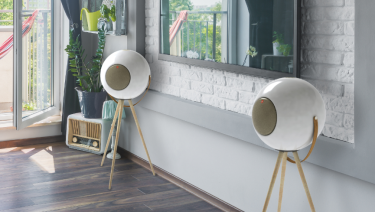Smart Consumer Tech Gaining Traction with Shoppers 8/17/2017
If the buzz at ECRM’s recent Electronics Retail Summit EPPS was any indication, our homes will soon be smarter than we are. According to buyers and sellers of consumer electronics our team interviewed during the meetings, the new Internet-of-Things products are going beyond mere connected devices and are now truly adding in a layer of intelligence around how we monitor, clean, light, heat and secure our homes and property, and enable provide us not only with usage information, but also with recommendations on how and when they should be used.
These include products such as security and surveillance monitors, door locks, connected lighting, appliances, and baby/pet monitors – all of which can be controlled via touchscreens or mobile apps.
Indeed, according to a recent study from PWC, "Smart home, seamless life: Unlocking a Culture of Convenience," 81 percent of US internet users are aware of the concept of smart devices due to the use of smart TVs, wearables, and other smaller connected devices that have been gaining traction with consumers over time.
Some findings from the report were:
- One in four US internet users currently own a smart home device.
- Device adoption results from four main motivators: savings, safety, convenience, and control.
- Price is currently the number one purchase barrier.
- Security around one’s data is a concern but often overlooked when the value of a product is proven.
- A payment plan for smart home devices would be a persuasive offering.
- Smart devices focused on safety command the highest price.
- Consumers are willing to spend on additional services and features after purchasing a smart home device—enhanced security features top the list.
- The majority of consumers say they are excited about the future of smart technology in their home.
And robots are small and inexpensive enough (relatively) to be used for entertainment, such as the humanoid or pet robot toys for children. Additionally, they make for great STEM toys, and some are available as actual kits which educate kids on the principles of robotics as they assemble them on their own. As we reported in our coverage of the Toy EPPS, STEM products are among the hottest areas of the toy category, and DIT robot building kits are a growing part of it.
Audio, Gaming Tech & Tech Accessories
That’s not to say that the old standbys of consumer electronics are no longer popular. While some attendees, for example, say that audio products are saturated, Bluetooth speakers and headsets are still very popular, particularly among music and gaming connoisseurs. In fact, a Bluetooth speaker, TGI Technology’s UB+ EUPHO O1, was the finalist of the Buyers Choice Awards. The speaker’s unique spherical design of the speaker enclosure was developed to enhance sound.
Anything gaming-related is also in-demand, particularly as gamers seek better controls and headsets to enhance their playing experience and communication with their friends as they play against them live over the internet. (Believe it or not, one of the favorite YouTube channels of my friend’s kids is nothing but videos of another kid playing video games while chatting about what he’s doing via a Bluetooth headset).
Finally, digital accessories – whether for computers, mobile phones, speakers, you name it – are consistent sellers, according to attendees, and what’s more are great impulse items. Items for holding, storing, charging, and cleaning these devices are great for clip strips or shippers at the point of sale. Our buyers Choice Award winner was one such accessory. Called Shark Proof, the company develops liquid glass wipe-on protection for smart devices. And as more of these smart devices, robots, and audio tech permeate the home, the more accessories consumers will need to organize, carry, and clean them!
CLICK HERE TO REGISTER FOR NEXT YEAR’S CONSUMET TECHNOLOGY EPPS.

